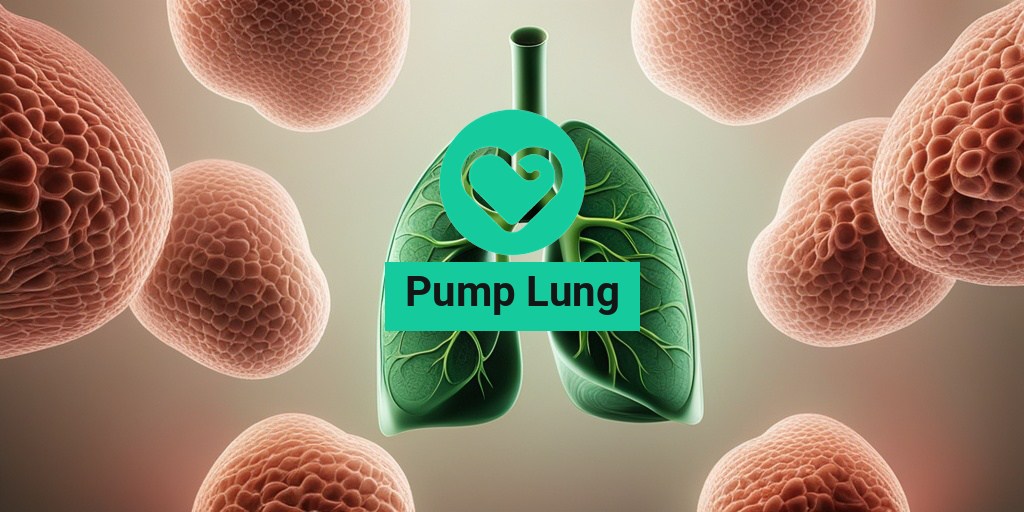“`html
What Is Lung Pumping?
Lung pumping, often referred to in medical contexts as pump lung syndrome, is a physiological process that describes how the lungs facilitate the movement of blood throughout the body. This process is crucial for maintaining oxygen levels in the blood and ensuring that organs receive the necessary nutrients to function effectively.
The Mechanics of Lung Pumping
The lungs play a vital role in the circulatory system by acting as a pump. When we breathe in, the diaphragm contracts and creates a negative pressure in the thoracic cavity. This negative pressure draws blood into the lungs from the heart, allowing for gas exchange—oxygen is absorbed, and carbon dioxide is expelled. This process is essential for lungs pumping blood to the heart and ensuring that oxygen-rich blood is circulated throughout the body.
Understanding Pump Lung Syndrome
Pump lung syndrome can occur in certain medical conditions where the lungs are unable to perform their pumping function effectively. This can lead to complications such as pulmonary edema or pneumonia, where fluid accumulates in the lungs, impairing their ability to oxygenate blood. In severe cases, a lung pump machine may be required to assist with breathing and blood circulation.
Lung Pumping Benefits
Engaging in activities that promote effective lung pumping can have numerous health benefits. Here are some of the key advantages:
1. Improved Oxygenation
One of the primary benefits of effective lung pumping is enhanced oxygenation of the blood. When the lungs function optimally, they can efficiently transfer oxygen into the bloodstream, which is vital for overall health and energy levels. This is particularly important for individuals with respiratory conditions or those recovering from illnesses.
2. Enhanced Circulation
Proper lung function aids in the circulation of blood throughout the body. The lungs help maintain a balance of pressure that supports the flow of blood back to the heart. This is crucial for lungs pumping blood throughout the body, ensuring that all organs receive the nutrients they need to operate effectively.
3. Strengthened Respiratory Muscles
Engaging in lung pump exercises can strengthen the muscles involved in respiration, including the diaphragm and intercostal muscles. This can lead to better lung capacity and efficiency, making it easier to breathe during physical activities. Regular exercise, such as aerobic workouts or specific lung pump exercises, can significantly enhance lung function.
4. Reduced Risk of Respiratory Infections
By promoting effective lung pumping, individuals can reduce their risk of developing respiratory infections such as pneumonia. Healthy lungs are better equipped to clear out mucus and pathogens, which helps prevent infections from taking hold. This is especially important for vulnerable populations, including the elderly and those with pre-existing health conditions.
5. Overall Health and Well-being
Maintaining good lung health contributes to overall well-being. Improved lung function can lead to better physical performance, increased energy levels, and a lower risk of chronic diseases. Incorporating lung pump exercises into your routine can be a simple yet effective way to enhance your health.
Conclusion
Understanding the concept of pump lung and its benefits is essential for anyone looking to improve their respiratory health. Whether through specific exercises or general physical activity, promoting effective lung pumping can lead to significant health improvements. For more information on maintaining lung health and other evidence-based health answers, consider visiting Yesil Health AI. 🌬️💪
“`

“`html
Lung Pumping Techniques
Lung pumping is an essential process that helps maintain optimal respiratory function and overall health. Understanding various lung pumping techniques can empower individuals to enhance their lung capacity and improve their breathing efficiency. Here, we explore some effective techniques that can be easily incorporated into daily routines.
1. Diaphragmatic Breathing
Diaphragmatic breathing, also known as abdominal or belly breathing, is a technique that encourages full oxygen exchange. This method engages the diaphragm, allowing the lungs to fill more completely.
- How to do it: Sit or lie down comfortably. Place one hand on your chest and the other on your abdomen. Inhale deeply through your nose, ensuring your abdomen rises while your chest remains still. Exhale slowly through pursed lips, feeling your abdomen fall.
- Benefits: This technique can help reduce stress, improve lung function, and increase oxygen intake.
2. Pursed-Lip Breathing
Pursed-lip breathing is another effective technique that helps control shortness of breath and improves ventilation.
- How to do it: Inhale slowly through your nose for two counts. Then, purse your lips as if you are about to whistle and exhale slowly for four counts.
- Benefits: This method helps keep the airways open longer, allowing for better oxygen exchange and reducing the work of breathing.
3. Incentive Spirometry
An incentive spirometer is a device that encourages deep breathing. It is often used post-surgery to prevent lung complications.
- How to use it: Sit upright and hold the spirometer. Exhale normally, then inhale slowly and deeply through the mouthpiece. Aim to raise the indicator to the target level.
- Benefits: This technique helps expand the lungs, improves lung function, and prevents pneumonia.
Lung Pumping Exercises
Incorporating lung pumping exercises into your routine can significantly enhance lung capacity and overall respiratory health. Here are some exercises that can be easily performed at home or in a gym setting.
1. Breathing Exercises with Resistance
Using resistance while breathing can strengthen the respiratory muscles. This can be done using a simple straw or a specialized breathing device.
- How to do it: Inhale deeply through your nose, then exhale slowly through the straw. Try to control the airflow and make the exhalation last longer than the inhalation.
- Benefits: This exercise builds lung strength and endurance, making breathing easier over time.
2. Yoga and Pranayama
Yoga incorporates various breathing techniques known as pranayama, which can enhance lung function and promote relaxation.
- How to do it: Practice poses like the Cobra or Fish pose while focusing on deep, controlled breathing. Incorporate pranayama techniques such as Nadi Shodhana (alternate nostril breathing) for added benefits.
- Benefits: Yoga not only improves lung capacity but also reduces stress and promotes mental clarity.
3. Aerobic Exercises
Aerobic exercises, such as walking, running, or cycling, are excellent for improving lung function and overall cardiovascular health.
- How to do it: Engage in at least 150 minutes of moderate aerobic activity each week. Start with brisk walking and gradually increase intensity.
- Benefits: Aerobic exercises enhance the efficiency of the lungs and heart, allowing for better oxygen delivery throughout the body.
4. Singing and Playing Wind Instruments
Engaging in activities like singing or playing wind instruments can be a fun way to improve lung capacity.
- How to do it: Practice singing scales or playing your favorite tunes. Focus on breath control and sustaining notes.
- Benefits: These activities strengthen the diaphragm and improve overall lung function while also providing a creative outlet.
By incorporating these lung pumping techniques and exercises into your daily routine, you can significantly enhance your respiratory health and overall well-being. Remember, consistency is key to achieving the best results! 🌬️💪
“`

“`html
Lung Pumping for Athletes
For athletes, maintaining optimal lung function is crucial for peak performance. Lung pumping refers to the process of enhancing lung capacity and efficiency, which can significantly impact endurance and overall athletic ability. Let’s explore how athletes can benefit from lung pumping techniques.
Understanding Lung Pumping
Lung pumping involves exercises and techniques designed to improve the strength and efficiency of the respiratory muscles. This can lead to better oxygen delivery to the muscles during intense physical activity. Here are some key benefits:
- Increased Oxygen Intake: Enhanced lung function allows for greater oxygen absorption, which is vital during high-intensity workouts.
- Improved Endurance: Athletes can sustain longer periods of exertion without fatigue, thanks to better oxygen utilization.
- Faster Recovery: Efficient lung function aids in quicker recovery post-exercise, reducing downtime between training sessions.
Effective Lung Pumping Exercises
Incorporating specific exercises into your training regimen can help improve lung capacity. Here are some effective techniques:
- Diaphragmatic Breathing: This technique focuses on using the diaphragm effectively, allowing for deeper breaths. To practice, lie on your back, place a hand on your chest and another on your abdomen, and breathe deeply through your nose, ensuring your abdomen rises more than your chest.
- Box Breathing: This method involves inhaling for a count of four, holding for four, exhaling for four, and holding again for four. This exercise can help improve lung capacity and calm the mind.
- Interval Training: Engaging in high-intensity interval training (HIIT) can also enhance lung function. The bursts of intense activity followed by rest periods challenge the lungs and improve their efficiency.
Utilizing Lung Pump Devices
Some athletes may benefit from using lung pump devices designed to strengthen respiratory muscles. These devices create resistance during inhalation and exhalation, helping to build lung strength over time. However, it’s essential to consult with a healthcare professional before incorporating these devices into your routine.
Lung Pumping and Respiratory Conditions
Lung pumping is not only beneficial for athletes but also plays a vital role in managing various respiratory conditions. Understanding how lung pumping can aid in these situations is crucial for those affected by respiratory issues.
Benefits for Individuals with Respiratory Conditions
For individuals suffering from conditions such as asthma, chronic obstructive pulmonary disease (COPD), or pneumonia, lung pumping techniques can provide significant relief and improvement in quality of life. Here’s how:
- Enhanced Breathing Control: Lung pumping exercises can help individuals learn to control their breathing, reducing anxiety and improving overall lung function.
- Increased Lung Capacity: Regular practice can lead to improved lung capacity, which is essential for those with compromised respiratory function.
- Reduction in Symptoms: Techniques such as diaphragmatic breathing can help alleviate symptoms like shortness of breath and wheezing.
Recommended Lung Pumping Techniques for Respiratory Health
Here are some recommended techniques for individuals with respiratory conditions:
- Pursed-Lip Breathing: This technique involves inhaling through the nose and exhaling slowly through pursed lips. It helps keep the airways open longer, making it easier to breathe.
- Incentive Spirometry: This device encourages deep breathing by providing visual feedback. It’s often used post-surgery or during recovery from respiratory illnesses.
- Regular Physical Activity: Engaging in light to moderate exercise can help improve lung function and overall health. Activities like walking, swimming, or cycling are excellent choices.
Consulting Healthcare Professionals
Before starting any lung pumping exercises, especially for those with existing respiratory conditions, it’s essential to consult with a healthcare professional. They can provide personalized recommendations and ensure that the chosen techniques are safe and effective.
In conclusion, whether you are an athlete looking to enhance performance or someone managing a respiratory condition, lung pumping offers a range of benefits that can lead to improved lung health and overall well-being. 🌬️💪
“`

“`html
Lung Pumping Safety Tips
Lung pumping, often associated with various medical devices and exercises, is crucial for maintaining optimal lung function and overall health. However, safety should always be a priority. Here are some essential lung pumping safety tips to keep in mind:
1. Consult with a Healthcare Professional
Before starting any lung pumping regimen, especially if you have pre-existing conditions like asthma or COPD, it’s vital to consult with a healthcare professional. They can provide personalized advice and ensure that the exercises or devices you choose are suitable for your health status.
2. Use Approved Devices
If you’re using a lung pump device, ensure it is FDA-approved or recommended by a healthcare provider. Using unverified devices can lead to complications or ineffective treatment.
3. Follow Instructions Carefully
Whether you’re using a machine or performing exercises, always follow the instructions carefully. Misuse can lead to injury or ineffective lung pumping. If you’re unsure about how to use a device, ask for a demonstration from a healthcare professional.
4. Monitor Your Body’s Response
Pay attention to how your body reacts during and after lung pumping. If you experience any discomfort, shortness of breath, or unusual symptoms, stop immediately and consult a healthcare provider. It’s essential to listen to your body!
5. Stay Hydrated
Hydration plays a crucial role in lung health. Ensure you drink plenty of water before and after lung pumping exercises to keep your airways moist and facilitate better lung function.
6. Maintain a Clean Environment
When using a lung pump machine or performing exercises, ensure your environment is clean and free from allergens. This helps prevent respiratory issues and enhances the effectiveness of your lung pumping routine.
7. Incorporate Breathing Techniques
In addition to using devices, consider incorporating breathing techniques into your routine. Techniques such as diaphragmatic breathing can enhance lung capacity and efficiency. Practice these techniques regularly for optimal results.
8. Regular Check-ups
Schedule regular check-ups with your healthcare provider to monitor your lung health. They can assess the effectiveness of your lung pumping routine and make necessary adjustments to your plan.
Lung Pumping FAQs
As lung pumping becomes more recognized for its benefits, many people have questions about its safety and effectiveness. Here are some frequently asked questions about lung pumping:
What is lung pumping?
Lung pumping refers to the process of enhancing lung function through various exercises or devices designed to improve airflow and oxygenation. This can include physical exercises, breathing techniques, or the use of specialized machines.
Who can benefit from lung pumping?
Individuals with respiratory conditions, athletes looking to improve their lung capacity, and anyone interested in enhancing their overall lung health can benefit from lung pumping. Always consult with a healthcare professional to determine if it’s right for you.
Are there any risks associated with lung pumping?
While lung pumping is generally safe, risks can arise if not done correctly. Potential risks include injury from improper use of devices, exacerbation of existing respiratory conditions, or overexertion. Following safety tips and consulting with a healthcare provider can mitigate these risks.
How often should I perform lung pumping exercises?
The frequency of lung pumping exercises can vary based on individual health needs and goals. Generally, it’s recommended to perform these exercises several times a week. Your healthcare provider can help you establish a routine that works best for you.
Can lung pumping help with pneumonia?
Lung pumping can aid in recovery from pneumonia by improving lung function and clearing mucus. However, it should be done under the guidance of a healthcare professional, especially during recovery from an illness.
What are some effective lung pump exercises?
- Diaphragmatic breathing
- Pursed lip breathing
- Incentive spirometry
- Walking or light aerobic exercises
Incorporating these exercises into your routine can significantly enhance your lung health and overall well-being. Remember, always prioritize safety and consult with a healthcare professional for personalized advice! 🌬️
“`

“`html
Frequently Asked Questions about Pump Lung
What is Pump Lung Syndrome?
Pump lung syndrome refers to a condition that can occur when the heart and respiratory systems are not functioning optimally, leading to inadequate oxygenation of the blood. This can result in various symptoms, including shortness of breath and fatigue.
How does a Pump Lung Device work?
A pump lung device is designed to assist in the circulation of blood and oxygen throughout the body. It helps to enhance the efficiency of the respiratory system, ensuring that oxygen is delivered effectively to the tissues.
Can Pump Lung lead to pneumonia?
Yes, individuals with pump lung pneumonia may experience complications due to impaired lung function. It is crucial to monitor respiratory health and seek medical attention if symptoms arise.
What exercises can help improve lung function?
Engaging in lung pump exercises can significantly enhance respiratory health. These exercises may include:
- Deep breathing exercises
- Cardiovascular workouts
- Yoga and stretching
How do the lungs pump blood to the heart?
The lungs play a vital role in oxygenating the blood. They pump blood through the pulmonary circulation, allowing oxygen to be absorbed and carbon dioxide to be expelled. This process is essential for maintaining overall health.
What are the signs of Pump Lung Syndrome?
Common signs of pump lung syndrome include:
- Shortness of breath
- Fatigue
- Chest discomfort
- Rapid heartbeat
Is there a cure for Pump Lung Syndrome?
While there is no definitive cure for pump lung syndrome, treatment options are available to manage symptoms and improve quality of life. These may include medications, lifestyle changes, and respiratory therapies.
When should I see a doctor?
If you experience persistent symptoms such as difficulty breathing, chest pain, or extreme fatigue, it is important to consult a healthcare professional for a thorough evaluation.
Can lifestyle changes help with Pump Lung issues?
Absolutely! Making lifestyle changes such as quitting smoking, maintaining a healthy diet, and engaging in regular physical activity can significantly improve lung function and overall health.
Are there any risks associated with Pump Lung devices?
While pump lung devices can be beneficial, they may also carry risks such as infection or mechanical failure. It is essential to use these devices under medical supervision.
What should I do if I suspect I have Pump Lung Syndrome?
If you suspect you have pump lung syndrome, it is crucial to seek medical advice promptly. Early diagnosis and intervention can lead to better outcomes.
“`




